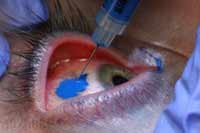FDA concerned with skin-harming tattoo inks
FDA, the Federal Drug Administration, has launched a study to review chemicals used in tattoo parlors. The US government initiated the research against the background of numerous incidents of skin problems, which particularly include rashes, blistering and swelling. The chemicals are used for tattoos which can be seen on various body parts of about 45 million American citizens.

Specialists will determine the composition of the substances injected in the skin during the tattoo-making process. The same study will be conducted for chemicals used in permanent makeup.
Scientists will analyze how the chemicals break down in the human body and which products may pose greatest risks. Some of the chemicals, or inks, that are using for tattoos, may cause allergic reactions, such as itching and inflammation on skin. A special research was conducted in 2005, when agencies recalled over 52,000 containers of tattoo inks made by a Texas-based company. More than 150 cases of above-mentioned skin-related problems – swelling, blistering, peeling and scarring – were reported to the FDA.
Tattooing has been practiced worldwide. The Ainu, the indigenous people of Japan, wore facial tattoos, as do some Maori of New Zealand to this day. Tattooing was widespread among Polynesian peoples, and among certain tribal groups in the Philippines, Borneo, Mentawai Islands, Africa, North America, South America, Mesoamerica, Europe, Japan, Cambodia, New Zealand and China. Despite some taboos surrounding tattooing, the art continues to be popular all over the world.
Tattooing involves the placement of pigment into the skin's dermis, the layer of connective tissue underlying the epidermis. After initial injection, pigment is dispersed throughout a homogenized damaged layer down through the epidermis and upper dermis, in both of which the presence of foreign material activates the immune system's phagocytes to engulf the pigment particles. As healing proceeds, the damaged epidermis flakes away (eliminating surface pigment) while deeper in the skin granulation tissue forms, which is later converted to connective tissue by collagen growth. This mends the upper dermis, where pigment remains trapped within fibroblasts, ultimately concentrating in a layer just below the dermis/epidermis boundary. Its presence there is very stable, but in the long term (decades) the pigment tends to migrate deeper into the dermis, accounting for the degraded detail of old tattoos.
The most common method of tattooing in modern times is the electric tattoo machine, which inserts ink into the skin via a group of needles that are soldered onto a bar, which is attached to an oscillating unit. The unit rapidly and repeatedly drives the needles in and out of the skin, usually 80 to 150 times a second. This modern procedure is ordinarily sanitary. The needles are single-use needles that come packaged individually. The tattoo artist must wash not only his or her hands, but they must also wash the area that will be tattooed. Gloves must be worn at all times and the wound must be wiped frequently with a wet disposable towel of some kind.
A wide range of dyes and pigments can be used in tattoos, from inorganic materials like titanium dioxide and iron oxides to carbon black, azo dyes, and acridine, quinoline, phthalocyanine and naphthol derivates, dyes made from ash, and other mixtures. The current trend for tattoo pigment favors Acrylonitrile butadiene styrene (ABS plastic) as seen by the widespread popularity of Intenze, Millennium and other ABS pigmented brands.
Iron oxide pigments are used in greater extent in cosmetic tattooing. Many pigments were found to be used in a survey of professional tattooists. Recently, a blacklight-reactive tattoo ink using PMMA microcapsules has surfaced. The technical name is BIOMETRIX System-1000, and is marketed under the name "Chameleon Tattoo Ink". This same ink can also be found as "The Original Blacklight Inks by NEWWEST Technologies".
Subscribe to Pravda.Ru Telegram channel, Facebook, RSS!





